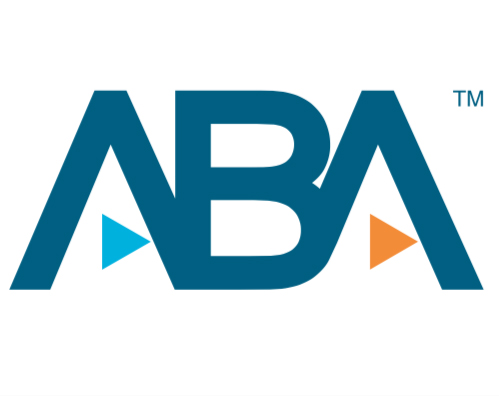From Generative AI to Revenue Drivers: Insights from the LawPay and MyCase 'Legal Industry Report 2024'

Nicole Black.
The pace of technological change over the past year has been fast and furious. It seems that every day there’s a new announcement, with legal technology companies rolling out generative artificial intelligence functionality into their platforms at breakneck speed. Blink, and you’ll miss the latest advancement or news release.
When you’re busy practicing law, keeping track of the evolving technological landscape is challenging even in the best of times. But when there are new products and features added every day along with the release of entirely new categories of software, maintaining your ethical duty of competence can feel like a nearly impossible endeavor.
That’s where industry surveys and reports like the just-released LawPay and MyCase Legal Industry Report 2024 come in. They bridge the knowledge gap by arming you with the information you need to know, enabling your firm’s success in the year to come.
This year’s report was based on survey responses from over 2,600 legal professionals and provides a wealth of information on trending legal technology issues ranging from generative AI understanding and adoption plans to technology implementation hurdles, and the top tools that enable law firm success and profitability. Whether it’s the value of providing flexible payment options to clients or the best law firm functions to outsource, this report has you covered and will provide actionable data that will ensure your decisions will streamline your firm’s operations and lay the groundwork for a profitable 2024.
Generative AI understanding and adoption
The survey data shows that while most legal professionals have some awareness of generative AI, most law firm leaders are on the fence about the how, why and when of generative AI adoption. According to the report, 63% of legal professionals have some level of familiarity with generative AI; however, only 27% of respondents reported that they personally used generative AI tools for work-related purposes, and 24% shared that their firms had adopted legal-specific generative AI software. By comparison, a mere 3% of firms had adopted consumer generative AI tools, highlighting a preference for tools designed with the needs of law firms in mind.
The top use cases reported for generative AI were brainstorming (58%), drafting correspondence (55%), general research (as opposed to legal research) (46%), document drafting (42%), drafting document templates (39%), summarizing documents (38%) and editing documents (34%). The report also includes many specific examples of use cases from legal professionals that range from trial preparation and marketing to law practice management and translation.
Another interesting finding was that respondents who were using generative AI in their practices experienced notable increases in efficiency. More than half of those surveyed (53%) said it increased efficiency somewhat, and for 24%, it increased significantly. In other words, for legal professionals who have adopted generative AI and are using it frequently, their productivity has been dramatically impacted.
There were many concerns cited that prevented generative AI adoption at this early stage. According to the results, lack of knowledge about the technology was a key deterrent to adoption, with 52% choosing that response. Other blockers included ethical issues (39%), lack of trust in generative AI output (39%), the infancy of the technology (33%) and concerns about privilege issues (25%).
But the big question is, will GAI replace lawyers? Survey results showed that 28% of firms planned to replace administrative functions, 18% were targeting legal-specific functions and 13% planned to replace some outsourced functions. A small minority (10%) intended to fully replace an administrative employee, and only 2% were considering replacing a lawyer with generative AI.
Strategies to increase law firm revenue and access to justice
Another key area of focus in this year’s report was how legal software can increase law firm profitability while also providing legal clients with payment flexibility. A variety of legal billing software features were examined to determine how their adoption impacted productivity and cash flow.
For example, online time-tracking tools had a noticeable effect on revenue, with legal professionals who used a time-tracking tool that passively tracked work done in the software captured an additional 579,665 hours over a year, which amounts to an additional $22,425 in billable hours per lawyer (assuming a conservative $330 billable-hour rate).
The data also highlighted how popular online payments have become, with 78% of respondents reporting that their firms now offered this option to clients. By doing so, the firms not only provided clients with a convenient way to pay for legal bills but also increased collection rates. Meanwhile, 19% reported that their firms collected more than an additional $10,000 each month by accepting online payments, 10% collected $8,001 to $10,000 more monthly and 8% collected $6,001 to $8,000.
Another innovative approach to increasing access to legal services adopted by some firms was “Pay Later,” a financial tool that provides clients with the ability to defer the full payment of legal fees while increasing a law firm’s collection rate significantly. According to the survey data, 19% of firms were already offering a “Pay Later” option to clients. Those firms received full payment for legal fees within three days, and 46% reported by offering “Pay Later” to prospective clients, their firms were able to sign on more new cases.
Key law firm management software features and outsourcing services
Finally, the report explored how firms are increasing efficiency by leveraging advanced technologies and outsourcing key law firm operational functions. For example, 58% of respondents’ firms reported using law practice management software with online texting functionality and 44% of those gained one to two additional hours each week, while another 17% saved three to five hours and 9% increased efficiency by five hours weekly.
Another way firms increased efficiency was by using virtual receptionist services, which allowed them to respond to prospective clients’ inquiries at any time, day or night. According to the report, 19% of respondents shared that their firms employed a virtual receptionist service and gained five or more leads each week over a year, while 21% acquired three to five leads and 33% obtained one to two leads.
Last but not least is e-filing. The data showed that 91% of firms can e-file, and they benefit from doing so; 34% reported a one-to-two-hour weekly efficiency increase; 27% gained three to five hours; and 26% saved five or more hours each week.
No matter what your firm’s plans for technology adoption, this report includes data that will inform your purchasing decisions. It offers timely insights into the efficiency drivers and growth opportunities gained from adopting generative AI and other innovative tools. This guidance will aid in choosing software and services that will lay the foundation for law firm growth. Whether it’s leveraging AI to enhance productivity or incorporating new software into your firm that will increase client service and revenue, you’ll find lots of data-driven insights to enable your firm’s strategic technology investments in 2024.
Nicole Black is a Rochester, New York-based attorney, author and journalist, and she is senior director of subject matter expertise and external education at MyCase, a company that offers legal practice management software for small firms. She is the nationally recognized author of Cloud Computing for Lawyers and is co-author of Social Media for Lawyers: The Next Frontier, both published by the American Bar Association. She writes regular columns for ABAJournal.com and Above the Law, has authored hundreds of articles for other publications, and regularly speaks at conferences regarding the intersection of law and emerging technologies. Follow her on X (formerly Twitter) @nikiblack, or she can be reached at [email protected].
This column reflects the opinions of the author and not necessarily the views of the ABA Journal—or the American Bar Association.



